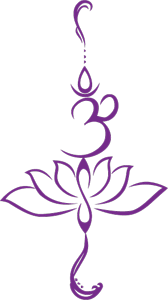Yogic Breathing Enhances Life
 The name for yogic breathing is pranayama, and it is the science of breath control. In yoga, the breath can be controlled for various health and spirituality benefits. We breathe from the day we are born until the day we breathe our last breath. Yet our breathing is often shallow, and we draw a minimal amount of air into our chests using the intercostal muscles rather than our diaphragms.
The name for yogic breathing is pranayama, and it is the science of breath control. In yoga, the breath can be controlled for various health and spirituality benefits. We breathe from the day we are born until the day we breathe our last breath. Yet our breathing is often shallow, and we draw a minimal amount of air into our chests using the intercostal muscles rather than our diaphragms.
Reasons for shallow breathing
One of the primary causes of shallow breathing is stress. Stress cues the body’s flight or flight response, and sets off shallow breathing. Very few people lead stress-free lives. Anxiety, fear, worry, and anger all result in shallow breathing. Most of us are so used to doing the shallow breathing that we become used to the side effects from it:
- High levels of carbon dioxide in the blood resulting in a condition called hypercapnia in which the blood turns more acidic. Prolonged acidic blood injures the body’s cells and can negatively impact heart functions to create arrhythmia or low blood pressure.
- Fatigue due to lack of sufficient oxygen.
- Mental fog.
Shallow breathing can also be a symptom of several diseases disorders or conditions such as congestive heart failure, pneumonia, pulmonary edema, asthma, COPD, neuromuscular disorders, and post-polio syndrome.
Pranayama defined
Pranayama offers yogic techniques to help practitioners become conscious of their breathing and control it. In these techniques, the Puraka (inhalation), the Rechaka (exhalation), and the Kumbhaka (breath cessation) are practiced consciously. The purpose of learning to control breathing is to control one’s prana, the subtle life-giving force that flows throughout our bodies.
In yogic philosophy, there are two types of energy in our physical bodies: prana and mind, or consciousness. Each organ of the body then has these two channels which supply energy to it. Modern medicine describes these channels as the sympathetic and the parasympathetic nervous systems.
In yoga, prana means an energy that is responsible for the body’s life, maintenance, and warmth. It is said to originate in one of the three channels in the spinal cord known as nadis, the pingala nadi.
Pranayama can help people learn to breathe deeply
Various yoga poses are known as pranayama exercises, and can help people learn how to breathe better. Here are two of the many available:
- Lion Pose
This is the fun one, also known as Simhasana, in which you kneel on the floor with the right foot crossed over the left one in the back and sit back on your feet. Pressing the palms against the knees with fingers splayed, take a deep breath in throng the nose. Open your mouth and eyes wide, and stick out your tongue while clenching your front throat muscles.
- Yoga of Sound Breath
Also called Svara Yoga Pranayama, this pose is designed to help you become better acquainted with your breath. Sitting comfortably upright with legs crossed in the front, pay attention to your breathing. Notice the flow between your inhale and your exhale and you will possible see that your inhale touches in a different place on your right nostril than it is on your left nostril. After a couple of minutes, narrow your inhalations, doing that for a couple of minutes. Next, breather normally for 30 seconds and repeat the entire exercise.
Pranayama techniques combine with yoga poses to increase the health of your entire body.


